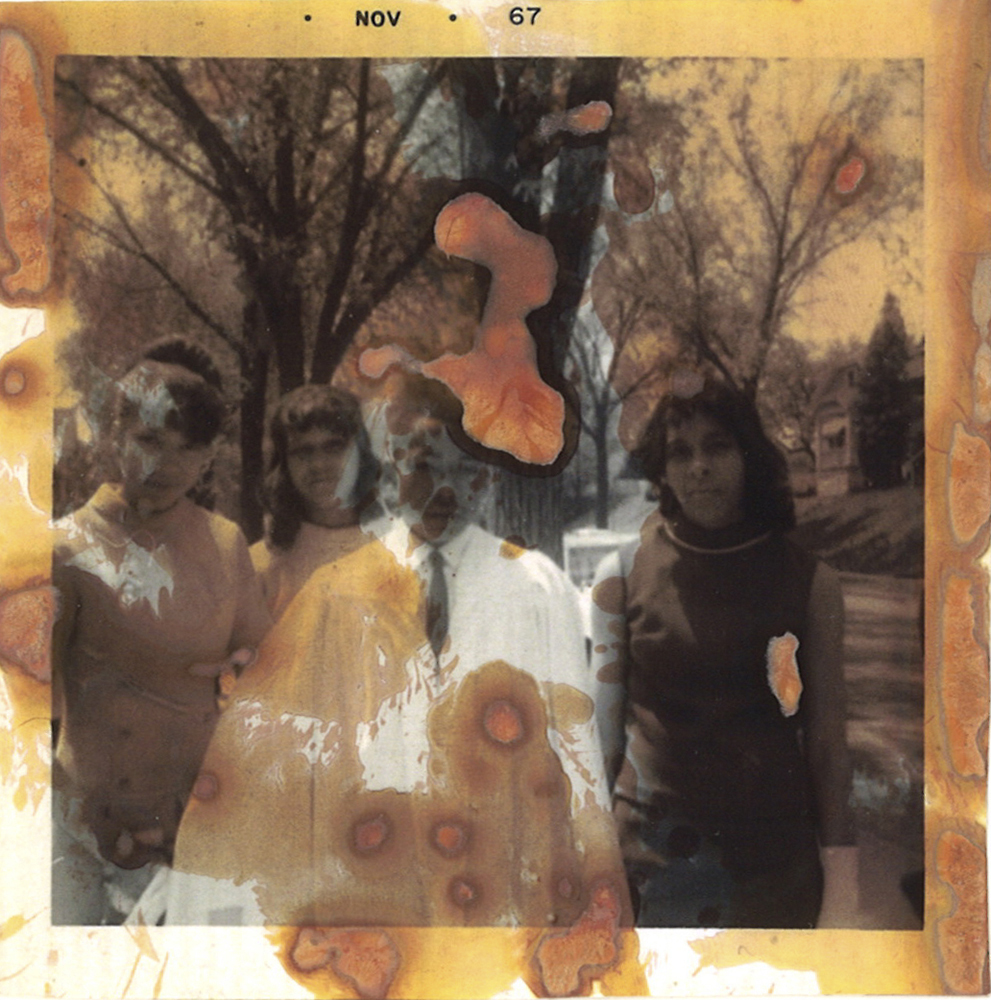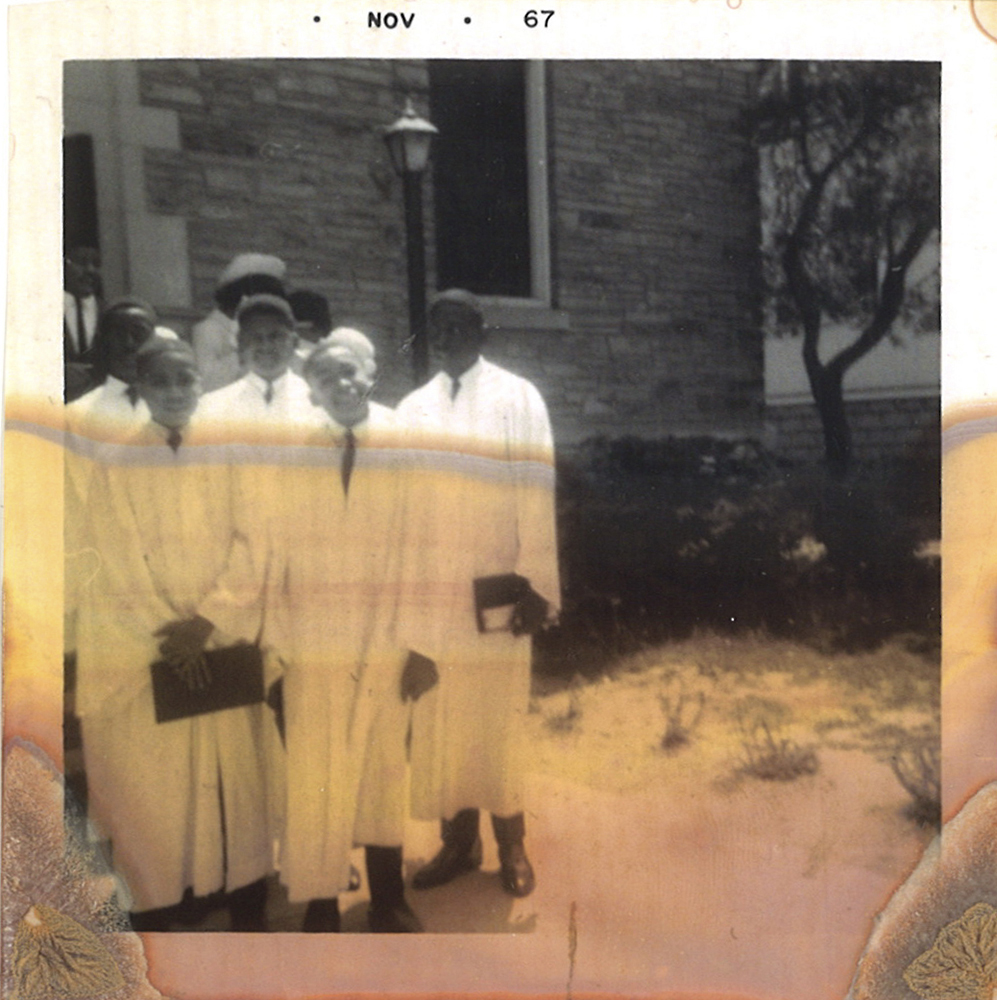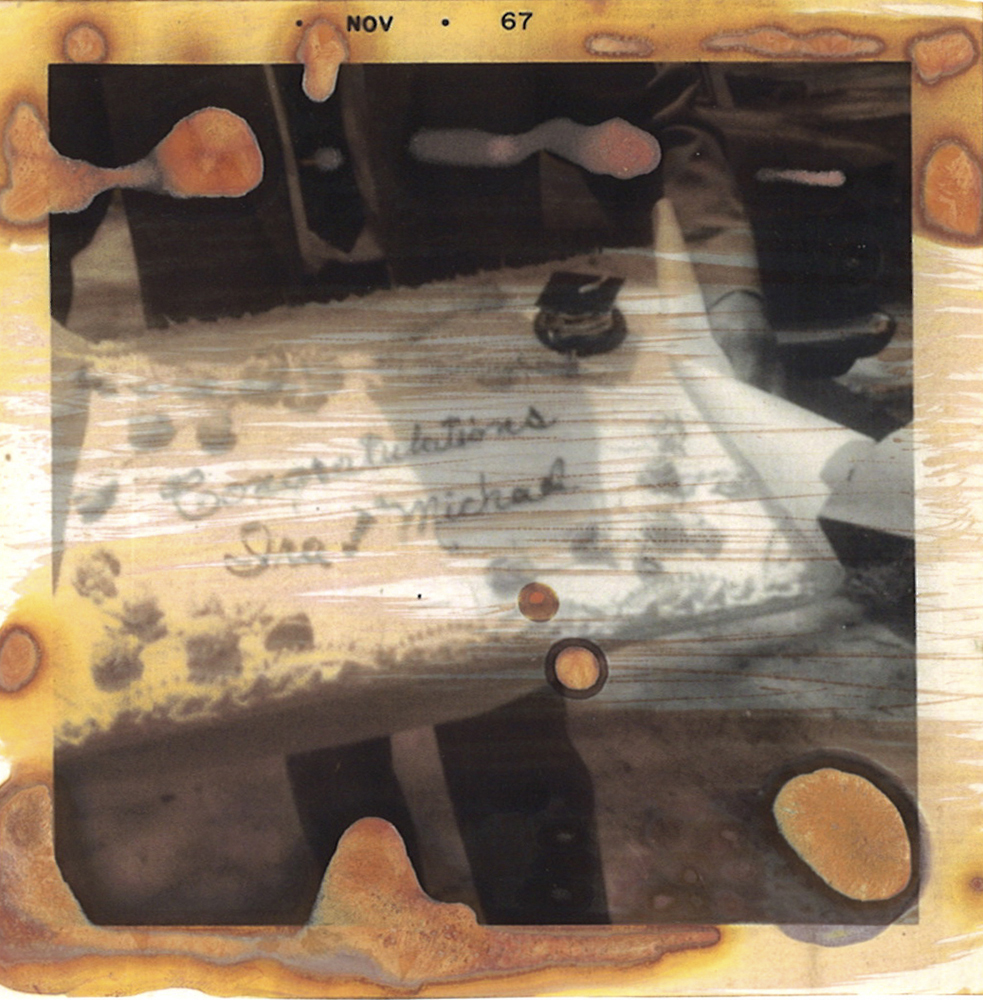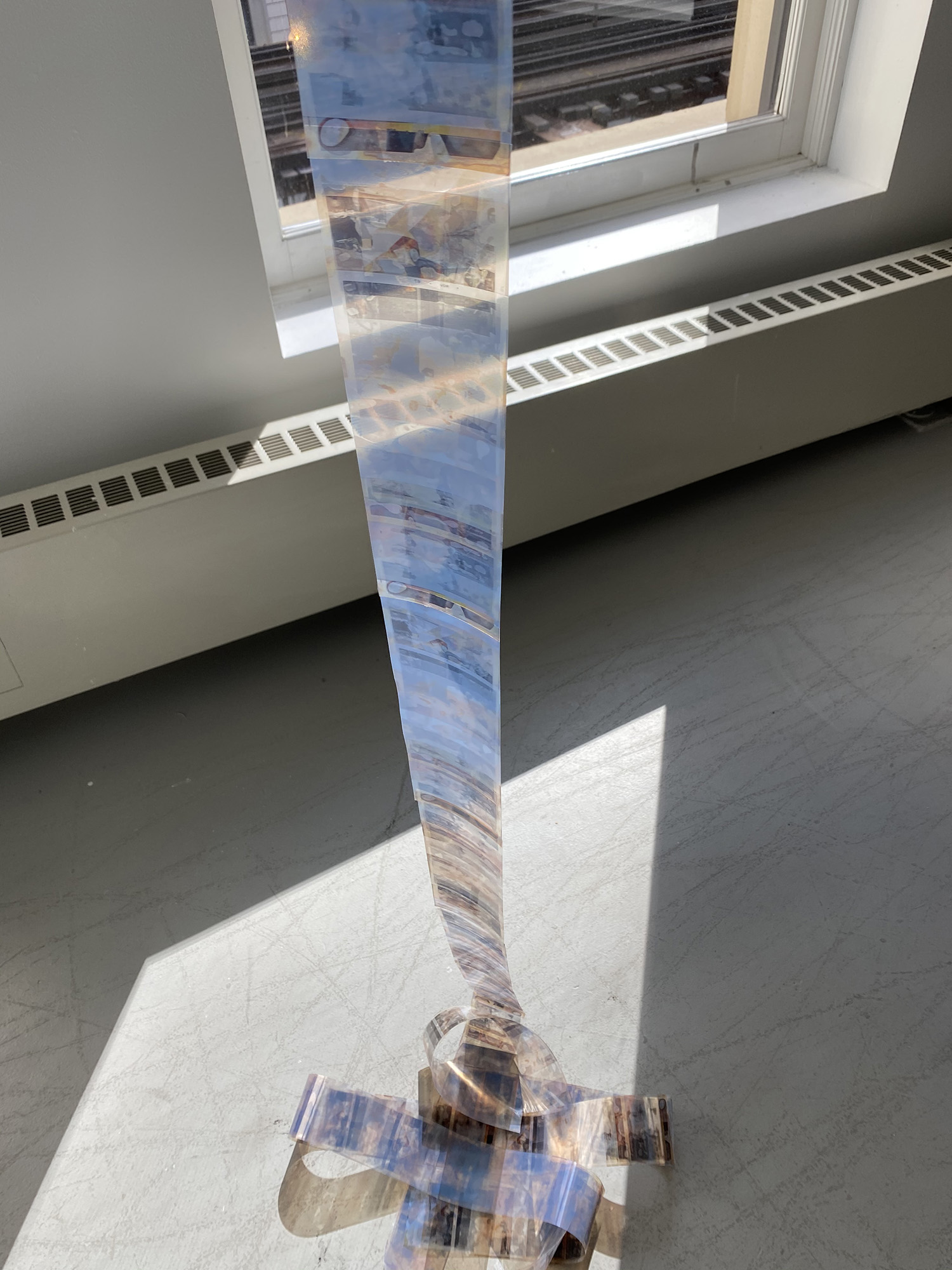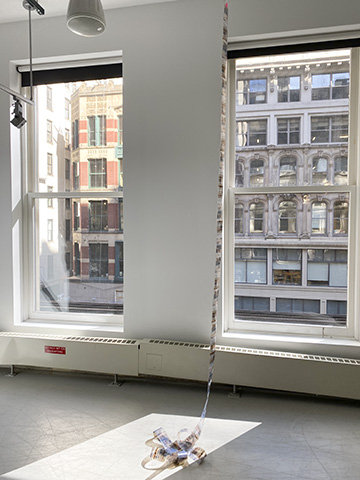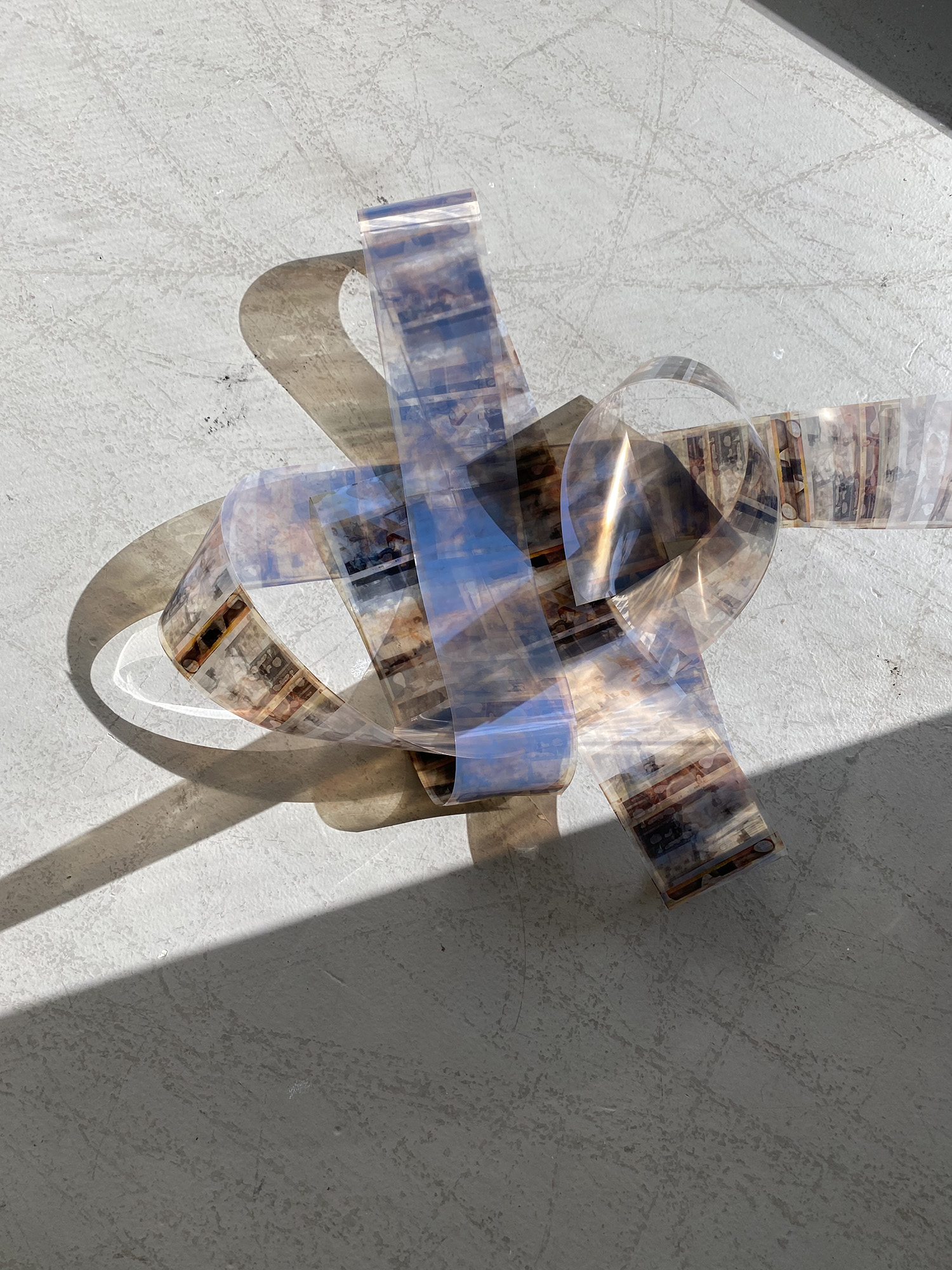The process of remembering is a universal experience. Every day we have rituals and habits that we need to recall to function in everyday life; how to walk, how to speak, how to write, and so on. Over the course of time, old routines evolve into new iterations. The process of remembering and its evolution continue to shift throughout our lifetimes.
This evolution of memory became complex for my grandparents when they were both diagnosed with dementia. We would look through old photo albums but they couldn’t tell me who was in the images, or recall depicted events. Our family photographs, originally meant to function as a site of memory, transformed into sites of forgetting.
As I wrote about my grandparents’ experiences, certain words such as “fade” and “deteriorate” kept reappearing. These terms became concepts and questions that I investigated materially through photography and photographic processes. I turned to my grandparents’ photo albums filled with significant social and cultural events that defined my family’s identity, such as my uncle’s confirmation ceremony. I reprinted photos of this event and painted them with Kodak Selenium toner; a chemical used to preserve images. However, in my usage, selenium was used to slowly deteriorate the images.
I transformed these photos and other related images through chemical interruption while documenting the process through time lapse videos. With the physical images, I used brush strokes to paint over the images and allowed chance/time to alter the result. The toner slowly distorted faces, details, and eventually disintegrated the material. The images themselves fell apart over time – metaphorically connected to my grandparents’ own decay of memory.
My grandmother also repeated details of events to recall more information about them. A typical sentence, for example, would be “The house was blue, we went inside the blue house for dinner. My cousins’ and I talked about the neighbor who painted the house blue a few years ago, who eventually married our aunt.”
I wanted to recreate a material version of this experience. I scanned the deteriorating toned images, layered them on top of one another in photoshop to create small strips, and printed them on transparent paper. I continued experimenting with the materiality of the paper and created longer transparent strips with repeated images and different ranges of deterioration that hung from the ceiling and piled on the floor. The events depicted in the photographs are abstracted by the transparent paper enough so viewers can see vague, repetitive details but cannot piece together a coherent narrative – referencing my grandmother’s process of repeating phrases to ground her failing memory. I am interested in combining the process of constantly remembering over a lifetime, with the temporality and deterioration of memory.
